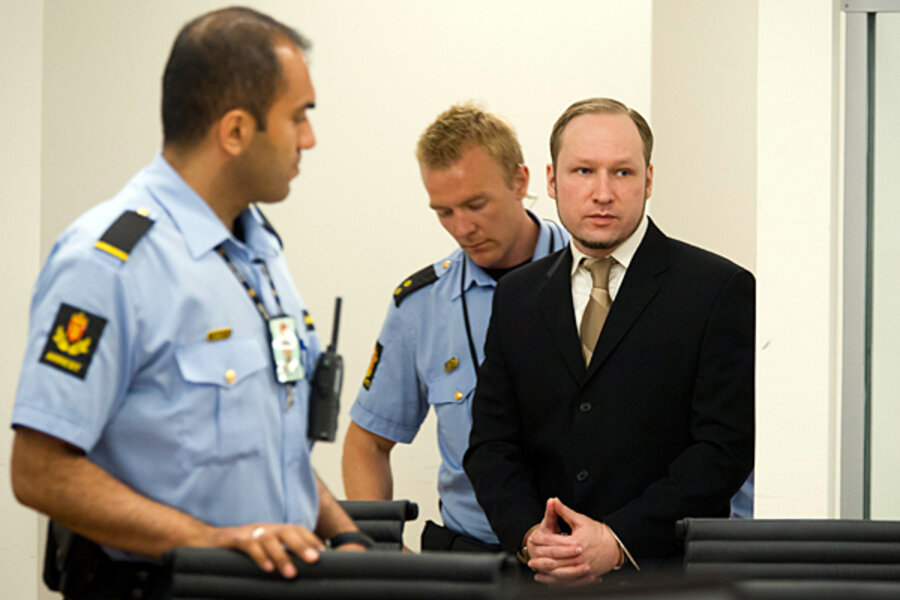Oslo police refute Breivik's claim of terrorist network, saying he acted alone
Loading...
| Oslo
Norwegian police have concluded that confessed mass killer Anders Behring Breivik acted alone in last summer’s twin terror attack that claimed 77 lives, despite his claim that he is part of a wider terrorist network.
Kenneth Wilberg, the Oslo police officer leading the investigation, told the court today that Breivik had neither “physical nor mental” helpers in his bombing attack on government buildings in Oslo and shooting rampage at a Labour party youth summer camp on Utøya island.
“The police have not found any grounds that Knights Templar exists in the manner in which the accused describes,” Mr. Wilberg said.
Breivik claims he was part of a pan-European militant nationalist organization called Knights Templar whose goal is to fight the Islamic colonization of Europe. He blames the Norwegian Labor party in particular because of its lenient immigration policy.
Wilberg said the police have identified 949 people, mostly media and Norwegian politicians, who received a copy of Breivik’s political manifesto by e-mail. However, it could not identify among the 8,109 e-mail addresses, some of which had encrypted accounts, the alleged member of the Knight Templar to whom Brevik claims to have sent a copy of “2083: A European Declaration of Independence.”
“It’s not like looking for a needle in a haystack,” said Wilberg. “It’s more like looking for a needle among 8,000 needles.” He added that the investigation was still ongoing while the trial proceeds.
Vidar Sæther, police superintendent at Norway’s National Bureau of Crime Investigation, told the court that the bureau believed Breivik’s trips to Liberia in 2002 were “economically motivated” by his desire to earn money from trafficking blood diamonds. Breivik claims he was there to meet with a Serbian war hero who would later send him to London to establish Knights Templar.
Mr. Sæther also prevented evidence showing that Breivik’s trips to the Baltics in 2004 were attempts to launder money from his false diploma business. Breivik said in his manifesto that he met there with 25-30 extremists from all over Europe and discussed Knights Templar with them.
The police investigation’s conclusion follows yesterday’s testimony by three childhood friends that Breivik underwent a sharp personality change in 2006 after moving in with his mother. One friend who knew him since they were 11 described Breivik as a kind and tolerant classmate with good grades and no violent tendencies.
However, his friends described a more removed and depressed Breivik after 2006 who was unemployed and increasingly spent his time playing the video game World of Warcraft in his mother's basement. They said he “lost his spark for life” and became more vocal about his anti-immigration and anti-Islamic views.
Yesterday was the beginning of testimony aimed at shedding light on how the 33-year-old Norwegian from a middle-class Oslo neighborhood could have planned Norway’s worst peacetime atrocity. More important, it could play an important part in determining whether he is sane.
Breivik’s sanity is at the heart of this case, since the first forensic psychiatric report last year concluded he was paranoid schizophrenic and hence not criminally responsible for the attacks. A second report in April, which is still under debate, found him sane.
Breivik is fighting to be considered sane because he says it will make his anti-Islamic ideology stand stronger.
The defense has indicted Breivik on the premise of the first report – that he is insane – but has left open the possibility for charging him as sane and seeking a maximum sentence of 21 years on terror charges. The defense is hoping that Breivik's sanity plea will be supported by upcoming testimony by authorities on extremist ideology, Internet debate, history, politics, religion, and society, showing that others share his extremist ideology.







